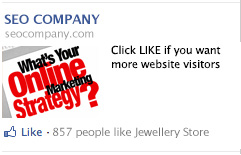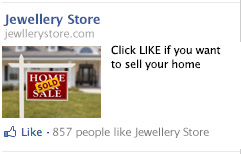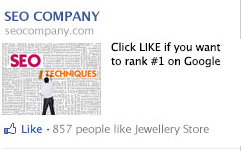



wattle
The Business Users Guide To Social Media
Contents
INTRODUCTION
WHY SOCIAL MEDIA NEEDS TO BE INCLUDED IN THE MARKETING MIX
THE CUSTOMER JOURNEY
ASDA AND THE FACEBOOK CUSTOMER JOURNEY
YOUR SOCIAL MEDIA BUSINESS GOALS SHOULD NOT BE ISOLATED
CHAPTER ACTIONS
WHAT SOCIAL NETWORKS SHOULD YOU BE ON?
FACEBOOK
TWITTER
LINKEDIN
OTHER SOCIAL NETWORKS TO CONSIDER?
GOOGLE+
CHAPTER ACTIONS
ESTABLISHING YOUR SOCIAL PRESENCE
SOCIAL MEDIA ADVERTISING
FACEBOOK PROMOTED POSTS
GAINING YOUR FIRST FEW HUNDRED TWITTER FOLLOWERS
BUILD YOUR LINKEDIN NETWORK
CHAPTER ACTIONS
YOUR CONTENT CALENDAR
WHAT IS CONTENT?
WHAT CONTENT SHOULD I PROVIDE?
CONTENT RESEARCH
CREATE SOMETHING EPIC
PROMOTE YOUR PERSONALITY AND COMPANY CULTURE
CONTENT CURATION
PROMOTING YOUR SOCIAL CONTENT
BORING INDUSTRIES
CHAPTER ACTIONS
BRANDING YOUR SOCIAL MEDIA PAGES
FACEBOOK
TWITTER
SOCIAL MEDIA MONITORING
WHAT IS SOCIAL MEDIA MONITORING?
HOOTSUITE
LEAD GENERATION
BRAND AWARENESS
CUSTOMER SERVICE
ANALYSING YOUR RESULTS
CONCLUSION
INTRODUCTION
Planning and executing a successful social media marketing strategy is a tough task, the number of networks as well as the growing complexity of managing your presence across all of them means that as a business you need to approach social media marketing with some careful planning and a well-defined strategy to ensure that you are able to measure the return on your investment and maximise the potential for success. This book is an attempt to provide you with as much information as I can on how to approach the management and implementation of a social media marketing strategy. I will expose some of my methods and share some of the tools and services I use myself to implement a successful social media strategy. The aim is to equip you with enough knowledge to be able to fully understand what is involved in crafting a successful strategy. For those of you working in marketing and using social media, it should provide you with some additional insights into how I work, and hope-fully provide you with some inspiration for the execution of your own social media strategy.
WHY SOCIAL MEDIA NEEDS TO BE INCLUDED IN THE MARKETING MIX
Social networks offer you the opportunity to put yourself in front of your target market almost immediately; with a targeted social media campaign you can have your message in front of your ideal customer within minutes, which is a very powerful proposition. Think about how many times you have seen a company advertise their respective Facebook or Twitter page this week alone. Television commercials, product packaging, and business cards - the list is endless. Companies are waking up to the fact that social media is an essential part of their sales, marketing and customer service process, but I’m afraid that it’s not just as simple as throwing up a Facebook page or registering a Twitter account. In reality, your business needs to implement a smart cross network social media strategy underpinned with clear measurable business goals to take advantage of this excellent opportunity.
Without a target or a clear business goal, there is nothing to measure and it’s going to be very difficult to justify the effort you put into your social activity, a key benefit of using social media is that unlike other sales and marketing channels you can actually measure the results.
If we were being brutally honest, the primary goal of most companies is to increase revenue –
maybe not directly! But ultimately any time or money we put into sales and marketing should convert into a measurable increase in revenue, even on social networks.
Revenue generation on social networks is a tough proposition as social networks are not ecommerce sites. Don’t think of them as a traditional marketing channel or as a store front, because you won’t always be trying to shift product or close deals directly. So what should your goal be?
•
Increase your website traffic
•
Generate leads
•
Increase brand awareness
All of these things are possible to achieve on social networks which means that it is a marketing channel that you should not ignore but you will need to think holistically and support your efforts across other channels to ensure that you get the best return – which is why you need a clearly defined customer journey.
THE CUSTOMER JOURNEY
As a business, you will have multiple methods in which a customer can engage with you. By understanding and documenting these touch points and establishing how you will steer the user through that journey, we can identify specific campaigns and goals at those points to deliver the overall business results we are looking for. In the specific case of our social media strategy, it will enable us to determine what our overall goals should be when we engage with users and create content to publish to those social networks.
Documenting a customer journey is an important step in your overall marketing strategy, I will always work towards fully understanding a business that we engage with, identifying who owns which touch points so that we can work towards a common goal.
Once you identify what those touch points are and how you will guide the user through that journey, you can consider how you will engage with the customer at each stage. This will help you to define your tone and brand message when updating social channels, as you will have a better understanding of what your overall objectives are.
More often than not the goal of your social media engagements will be to either service a customer via a customer service process, or to engage with current and prospective customers via content updates. How you move a customer from a comment on a social update to your till or the credit card entry screen on a webpage is what we are trying to determine - the bigger picture!

ASDA AND THE FACEBOOK CUSTOMER JOURNEY
ASDA, the UK supermarket chain, targets Facebook users with a very media rich content calendar. Using images that have been created specifically for Facebook they post regular updates to people that have liked their business page. Take a look at this post.
This post includes a high quality image with
a link that guides the user to the external
ASDA webpage where they can obtain a
recipe.
• It provides valuable targeted content;
people who shop for food will probably
want recipes!
• Images perform well on Facebook and
users like to see them (when they are
relevant), so opting for a high quality
image-driven post was the right choice
for this network.
• It is timely, on the day of this post the
sun was shining.
• It drives visitors to their website
• Asda can track clicks and review the so-
cial reach of the post
Once on the website, the content provides the user with a full recipe and ultimately enables users to purchase the ingredients - you can even have them delivered to your door the same day.
The key thing to take away from this one particular update from ASDA is that it is being done with a clear strategy, and it is in keeping with the spirit of Facebook. It is, however, also meet-ing their business goals - these goals are consistent across each update ASDA publish. ASDA are driving traffic to their website, and once the user is there, they offer an opportunity to make a purchase. The key point is that the content is offered as a valuable piece in its own right - Facebook users that like lemonade might want to tell their friends about this recipe!
They are likely to click like and might engage with a comment or a share. Each comment or like will increase the social reach of that update by notifying that person’s Facebook friends of their interaction increasing the reach of the post.
On Facebook social reach is measured by users that have not liked your page seeing your update because a user interacted with you. In this case, if a user likes the ASDA recipe then their friends might see that like on their news feed and they will consequently have an opportunity to like it as well - those additional users were obtained by the social nature of the interaction.
The more users that see and interact with the picture, the more traffic they are driving to the recipe URL. The option to purchase is provided a little further along the customer journey when it makes sense to do so and it is only done as a way to add value to the content - someone can still utilise the recipe without making a purchase.
This very personal affirmation of your content and ultimately your brand is what makes your social media presence so powerful.
ASDA could have posted the recipe directly on Facebook and provided a link to purchase the ingredients, but that would not have been in keeping with the spirit of Facebook. People will want to like the image and might be motivated to purchase the ingredients from ASDA if they decide to use the recipe. They have clearly thought about the customer journey, from Facebook to their website and ultimately the shopping cart and at each step they have made it relevant and useful to the user.
ASDA utilise several tools to track their business goals are being hit - they leverage bitly to shorten the URL so that they can track clicks, and once they are on the site they leverage web analytics to track goal conversions (how many purchases are made). Because this is a Facebook post, they can also access specific post level analytics from within Facebook to determine how well it has performed.
YOUR SOCIAL MEDIA BUSINESS GOALS SHOULD NOT BE ISOLATED
The goals you set for your social media strategy should not be set in isolation - your marketing, sales, and customer service strategy should all be tied to your social media strategy to ensure you remain consistent across all aspects of your business. Consider how your social channels can benefit your online and offline marketing efforts, cross promote your social channels across your other sales and marketing channels, and consider each stage of your customer journey offering opportunities for customers to engage with you on social networks at each touch point.
By getting this down on paper you should be able to see if there are any gaps in your overall strategy, each touch point should be connected, in an ideal world you want to be driving prospective customers through that journey closer towards the stages of converting them into a paying customer.
Your social media presence will often sit at the top of your customer journey as it is a channel that offers you the ability to interact with people that have never encountered your business before, but it can also sit within the service side of your business as it offers a way for existing customers to interact with you, providing opportunities to extend the reach of your brand via social interactions with existing customers.
CHAPTER ACTIONS
• Document your ideal customer journey defining how a user will find your business
• As part of that journey Identify the touch points where a prospective customer will interact with you
• As part of your customer journey identify the stages where you can convert a prospective customer into a paying customer


WHAT SOCIAL NETWORKS SHOULD YOU BE ON?
Deciding what network your business should have a presence on is an obvious but important first step, each network has its own nuances and more importantly a slightly different demographic, you will also need to consider the time and resource you have available to you to manage each presence as there is no point in using a network if you are not investing your full energy into getting it right.
FACEBOOK
Facebook implements a closed approach to social networking; at its core it is a platform that facilitates an online representation of real world relationships or friendships. A Facebook friend is (more often than not) a real friend while a Facebook user’s news feed provides them with a personalised list of updates that directly relate to their list of friends.
Facebook also includes the ability to create business pages, and the open graph provides the facility to register physical objects as likeable items. A Facebook like is an action a user performs on an item within the Facebook network, and clicking the like button will advertise that user’s approval to their closed network of friends. Due to the personal nature of Facebook friendships, it is not often used for business to business relationships. This makes it an ideal platform for a B2C company or brand, but that’s not to say a B2B company should not have a presence!
TWITTER
Twitter is an altogether different beast from Facebook - its relationships are less personal making it a more open public network. The concepts of friendships on Twitter are not as direct as Facebook; a user can follow another user without approval (unless the recipient specifically changes his permissions, which is rare). Due to the open nature of the network, it creates a great opportunity for both B2B and B2C companies to obtain some very meaningful social intelligence.
LINKEDIN
LinkedIn is a business social network; it is centred on the concept of establishing connections with people you actually know, but it also offers many opportunities for business networking.
As a business platform it is unmatched; it is particularly beneficial to small and medium-sized business as it offers you the ability to pay for accounts that give you access to its vast network of business contacts. This means that finding and engaging influencers is straight forward -
think of it as an enormous networking opportunity.
You do not need a paid account to be able to leverage LinkedIn, but to connect with people outside of your own network of contacts you need to leverage introductions or Inmail, which is where a paid account becomes beneficial.
Aside from your own personal presence, you can also create a company presence on LinkedIn where you can create specific pages focused around your products or services, and show associated employees of your business and you can create and manage groups to build a community related to your industry.

GOOGLE+
This network is rapidly growing, and in some quarters it is stated that they are outpacing Twitter as the second largest social network and are set to exceed Facebook in terms of market share by 2015. It creates an opportunity for a business to establish a branded presence that is focused around the sharing of content, and it is a very media driven social network.
Google can make or break a business, where you rank within the Google search results is something that can massively increase a company’s website traffic and revenue. Google claim there is no correlation between a company’s presence on Google+ and their search engine rankings, but respected industry experts do not share their opinion. If they are right, then in the near future it could be an essential network for a business to be on.
OTHER SOCIAL NETWORKS TO CONSIDER?
Instagram
Pinterest
YouTube
Instagram and Pinterest are image centric networks and can provide value, Pinterest has a particularly vibrant community that is ideal for promoting rich vibrant product images if you have an attractive product.
If I was forced to provide a generic answer as to what networks you should be on, I would say Facebook and Twitter, with a business presence on LinkedIn. If you have an established presence, then I would look to exploit Google+ and other networks to maximise your social media investment. That being said, each business is different, and understanding what your social media goals are is an important step towards understanding where you should establish your presence.
Probably the most important thing to consider is where your target customers are, and how they prefer to be engaged, this can only be achieved with research and planning, review your competitors and related businesses that have a social presence and see where they are gaining the most traction, which should help steer you towards deciding what networks you should invest in.
You should consider the business role of each network you have a presence on, often a business will use Facebook supported by paid advertising for product promotion, Twitter for customer service and outreach and you might want to consider a network like Instagram for promoting your company culture.


Business to Business
Business to Consumer
CHAPTER ACTIONS
• Research competitors and related organisations establishing where they have a social presence
• Review your internal resource and be realistic about how much time you can spend managing social media
• Create accounts on your selected social sites
ESTABLISHING YOUR SOCIAL PRESENCE
Many people reading this article are already likely to have a social presence, and whilst a lot of companies create profiles, their rate of activity drops within a month or two because they are not gaining any traction - it can be a little frustrating when you are only talking to yourself! This section of our article will focus on establishing a presence, and it will be particularly useful to those companies that have a social presence that they are struggling to grow and develop. Gaining that initial audience is tough, but once you are established it becomes easier to build upon. This is due to the viral nature of social networks, and the fact that you now have some social proof.
Social proof is a basic psychological concept: the more page likes a Facebook page has, or the more followers a Twitter user gains, the more other people will want to engage with them due to their perceived popularity.
You will need to populate some initial content to ensure that there is a basis on which to build. This can be a frustrating time because you will be investing effort into content generation and yet initially have a limited audience to consume it, but you will need to persevere.
Picking the networks where you will have a presence makes the task easier from a planning perspective, but keep in mind that the more networks you are on, the more work there will be in establishing a presence on each of them.
The best way to establish a presence on any social network is to provide valuable content, engage with its users, and invest in advertising on that platform.






SOCIAL MEDIA ADVERTISING
Facebook is one of the easiest networks to leverage advertising on to grow your initial base of users. What you are trying to achieve is a targeted list of users that will click like on your page, so how can we achieve that? One approach I have taken is to directly ask them! I can micro target my campaign so that it only displays adverts to an audience I know are interested in the business I am working with and then ask them to like my page, in the case of Wattle we asked:
Click LIKE if you manage a Facebook business page
Why did we ask this? We want to engage with business users that leverage Facebook, and we want to promote Wattle and offer our consultancy services to brands that are invested in Social Media. So we created an advertising campaign that targeted individuals who were marketing managers, or who worked with social media, and asked them to like us.
This campaign generated nearly 200 likes in just a few days with a budget of £10 a day. Where else can you target your audience for a tenner a day and end up with a captive base of users that have been qualified as interested in what you do? You can increase your budget to match your own goals (the more you spend the more success you will have), so the only limit is the number of users that you can reach with your targeting.
A Jewellery Store
An SEO Company
An Estate Agent
When you create an advert on Facebook as part of the process you have the ability to target users by interest and country, this provides an advantage over search based PPC as you can directly reach out to people that are already potentially interested in your business.
When creating a Facebook advertising campaign you will need to provide an image, and this image has to be eye-catching enough to attract a person’s attention to it. The advert will be placed in the far right-hand side of a user’s news feed so their eyes are not going to be naturally drawn to that location. I have found that bright or unusual images work well on these campaigns, you can split test your adverts to find out which variations or images and text work well.
You can run multiple versions of an advert, enabling you to try different images and text. By setting a daily budget you won’t be charged any more money but you will quickly establish which advert is performing and gaining the most likes. Let your campaign run for a day and then disable the low performing adverts and run with the working copy and image.
While your campaign is running you will want to provide regular content to the users you are gaining, and if your content strategy is on the money you should achieve some viral reach and obtain some additional likes. Don’t get too excited as it will take a lot of work to stand on your own two feet without the advertising campaign supporting you.
FACEBOOK PROMOTED POSTS
Facebook also enables you to promote an update, it is a cost effective way to put your message in front of a wider audience, this feature works well with an engaging relevant image
– there is no reason why you wouldn’t directly advertise your products or service using this feature, it offers a quick way to generate traffic – in general I would advise businesses to leverage promoted posts as part of a wider campaign, when you need a short burst of targeted traffic and there is an overall objective (such as a lead capture form gating a valuable piece of content) then it can work, but do not expect a huge boost in page likes as a result of a promoted post.
GAINING YOUR FIRST FEW HUNDRED TWITTER FOLLOWERS
You can adopt a similar approach on Twitter with paid advertising via a promoted Tweet. The difference here is that you will want to start with an interesting piece of content to act as the anchor for that campaign. You can also leverage a paid feature to advertise your account, and Twitter will recommend your account to users. The exciting thing about this approach with Twitter is that you can specify a list of competitors and it will target followers of that account.
Unlike Facebook, on Twitter there is an easier way to gain your first few hundred likes, use the network in its intended spirit!
Review your key competitors, find people already engaging with them and then follow them.
Due to the nature of Twitter etiquette, you will find a large number of those users follow you back, or if not, it is likely that they will at least take a look at your profile. I compliment this by running a parallel social campaign inside Wattle Social that monitors brand or industry keywords and I then leverage the influencers chart to follow people that are influential in the industry I am targeting.
The key issue with this approach is that by following a large number of users (when your own following is low), it becomes a little obvious that this is a tactic to increase your base of users.
This is in fact a little frowned upon, so compliment it with other Twitter specific engagements such as…
• Retweet interesting content that you will now have in your news feed from the users you follow.
• Create lists and add users to them - users will be alerted to you adding them to the list.
• Favourite content that you find interesting, and again users will be alerted.
• Comment on content other users post.
• Say hello to prospective customers, influencers and even competitors! Engage them in conversation with @mentions.
Regularly review your account to establish which users are not following you back. You will want to keep your follower to following ratio in balance as you are aiming to have more people follow you than users you follow to provide that perceived level of social proof. You will also notice that while you will gain followers, once you prune back your following list, that number will also drop because a percentage of those new followers will only have been given out of courtesy while you follow them (how many times did I type follow in that sentence!).
BUILD YOUR LINKEDIN NETWORK
LinkedIn is more focused around your network of contacts: first, second and third degree connections (the further they are the harder it is to connect with them). If a contact is a first degree connection, you are able to contact them directly and the content you share will be seen on their news feed, so the goal should be to establish relationships.
The best way to achieve this is by joining industry groups as group connections can be sent connection requests with a personalised introduction. It is often the case that you can expand your professional network by engaging with the group and connecting with those users you are building relationships with. Be careful with this approach; don’t spam a group’s member list! What you are trying to achieve is real valuable connections. LinkedIn is specific in its terms, and it requires you to have a relationship with the user you are connecting with, so make an effort to achieve that by engaging on their group



















